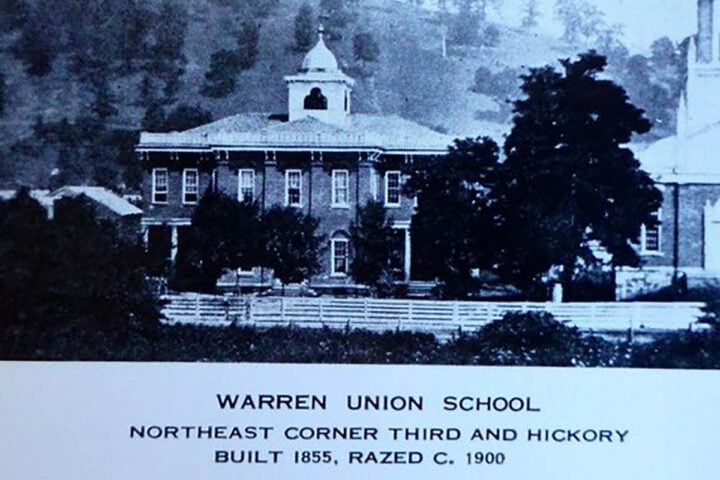by Stephen Caruso, Pennsylvania Capital-Star
December 16, 2021
Roughly one in 10 Pennsylvania lawmakers, mostly House Republicans, will face off against their colleagues under maps approved by the state legislative redistricting panel on Thursday afternoon.
In two votes, one unanimous, one 3-2, the five-member Legislative Reapportionment Commission approved the preliminary maps after an hour of pointed but respectful debate.
These lines have a long path to becoming law: 30 days of public comment, a second vote, and 30 days for potential legal challenges remain. But once a new map is implemented, it will fundamentally alter the political balance of power in Harrisburg for the next decade.
The commission consists of the four floor leaders — House Majority Leader Kerry Benninghoff, R-Centre; House Minority Leader Joanna McClinton, D-Philadelphia; Senate Majority Leader Kim Ward, R-Westmoreland; and Senate Minority Leader Jay Costa, D-Allegheny — plus a fifth member serving as its chairperson, former University of Pittsburgh Chancellor Mark Nordenberg, who was picked by the state Supreme Court to lead the commission.
“In the course of recent months, I have regularly heard how easy it is to draw legislative maps,” Nordenberg said. But “my own recent experience there is nothing easy about drawing these maps. That is particularly true when they must ultimately be supported by a majority of a small group, and not drawn in the comfort of one’s study in their home.”
Pennsylvania’s 203 House districts and 50 Senate districts must be redrawn to match the state’s changing population. According to the U.S. Census results, most of the commonwealth’s population gains were in the eastern half of the state, while most of its losses were in the western half.
New district maps loom over Pa. lawmakers ahead of long-awaited reveal
Those shifts meant that political observers expected a handful of seats to shift from Republican areas to more purple political terrain in the southeast. In the end, Philadelphia, Lancaster, and Montgomery counties gained new seats, all of which likely would be Democratic
The House map creates six Republican-on-Republican primaries, one Democrat-on-Democrat primary, and four incumbent general election matchups, for a total of at least 22 incumbents drawn together.
Nordenberg and McClinton argued that this redraw was a necessary consequence of the state’s shifting population, an effort to expand minority representation through seven new districts without incumbents, and an attempt to undo “decades of gerrymandering in previous reapportionment cycles,” as McClinton said in a written statement.
“The preliminary plan that is presented today substantially corrects these wrongs through faithful adherence to the requirements in the Pennsylvania Constitution,” McClinton concluded.
Benninghoff, however, disagreed. He pointed to a handful of misshapen districts in central Pennsylvania, the splitting of central Pennsylvania cities such as Lancaster and Harrisburg, as well as an analysis by Brigham Young University political scientist Michael Barber, to argue the maps were an “extreme partisan gerrymander favoring Democrats.
“I’m sure that in order to justify this map, you will hear a lot of loaded terms like ‘competitiveness’ and ‘proportionality,’” Benninghoff said. “Neither of those terms appear in our state constitution.”
According to an initial analysis through Dave’s Redistricting App, an online redistricting website, 93 House district lean Democratic, 81 lean Republican, and 29 are competitive — though the app gives the map low marks overall for competition
The large number of Republican primaries also angered the GOP caucus. State Rep. Jason Ortitay, R-Washington, is one of the incumbents who faces a primary challenge.
He told the Capital-Star that he wanted a clearer picture of how and why Nordenberg and his staff drew the map they drew, pointing to widespread population discrepancies and split municipalities.
Such moves are par for the course in redistricting, Ortitay acknowledged. But he thought that the whole aim of Nordenberg as chair of the commission “was to make that different,” avoiding the disproportionate, meandering districts that have frustrated advocates.
As for his potential primary against colleague state Rep. Mike Puskaric, R-Washington, “until I see that final map, I’m not ready to say ‘Screw you man, I’m coming for ya,’” Ortitay said.
The Senate draft appears fairer to sitting lawmakers. There is just one incumbent-on-incumbent matchup in northeastern Pennsylvania, between Sen. John Yudichak, an independent who caucuses with Republicans, and GOP state Sen. Lisa Baker, both of Luzerne County.
The map does put Sen. John DiSanto, R-Dauphin, into a much more Democratic seat made up of Harrisburg and its suburbs, without Republican Perry County. And the map moves GOP Senate President Pro Tempore Jake Corman’s seat in Centre County south to Cumberland County, creating an open opportunity. Corman, who is seeking the 2022 GOP nomination for governor, has said he will not seek reelection next year.
The Senate, Nordenberg said, was drawn largely through negotiations directly between Senate leaders Costa and Ward. However, the House leaders, Nordenberg said, had “limited interactions,” and the resulting map was ”guided by [the commission’s] responses” to them.
In the end, the commission separated the votes on the maps, breaking with precedent. Instead, the Senate map was approved unanimously, and the House map in a 3-2 vote, with the Republican leaders dissenting and Nordenberg voting with the Democratic leaders.
With the map’s approval Thursday, the public — including citizens and lawmakers — has 30 days to submit comments to the commission. The commission must then address those comments and produce a final map before the end of that same period.
Capital observers also expected legal challenges to the maps, which could further complicate their implementation.
Critics have 30 days after the final maps are implemented to file a challenge in the state Supreme Court, according to the state constitution. The court can either affirm the map, or ask for a redraw.
In 2011, challenges to the commission’s initial map succeeded, and the commission had to start again. The ruling forced lawmakers to run in their old districts in 2012.
All of this is taking place against another deadline — Jan. 24, 2022, when the Department of State said it needed the final legislative and congressional maps by, to allow for the state’s May 2022 primary to go forward as planned.
Nordenberg agreed that their timeline was tight, but thought that the commission could still get maps in place in time for the primary.
As for a legal challenge, “rather than being concerned, I simply anticipate that there will be legal challenges to the plan, as there consistently have been.”
Even the preliminary map, which will be subject to change, would stand up to legal challenges, Nordenberg argued.
Pennsylvania Capital-Star is part of States Newsroom, a network of news bureaus supported by grants and a coalition of donors as a 501c(3) public charity. Pennsylvania Capital-Star maintains editorial independence. Contact Editor John Micek for questions: [email protected]. Follow Pennsylvania Capital-Star on Facebook and Twitter.



























